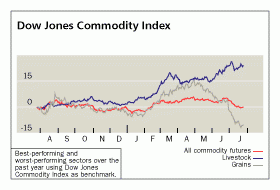There’s a lot of rubber that won’t be meeting the road anytime soon.
Benchmark rubber futures have tumbled 31% this year, fueled by huge stockpiles in Thailand and slowing growth in China, the world’s biggest consumer of the flexible, waterproof material used in products such as latex gloves, balloons, and car tires.
China’s gross domestic product grew 7.5% year on year in the second quarter, up from 7.4% in the first three months of 2014, but economists expect momentum from recent targeted pro-growth policies to peter out toward the end of the year. That means demand for rubber could fall, dragging prices even lower.
Supply is expected to exceed global demand for a fourth consecutive year in 2014. “An end to ample supply is not in sight,” Commerzbank said in a note. “Because of their long growth phase, plantations that were established during the high-price phase in 2010-11 are still reaching maturity.” Analysts say it takes about seven to eight years for rubber trees to become fully productive.

Front-month rubber prices on the Tokyo Commodity Exchange ended on Friday at 191.9 yen ($1.88) a kilogram. On June 6, Tocom rubber hit a near five-year low at ¥182.4 a kg, according to FactSet. Most physical buyers have remained on the sidelines, while farmers refrained from tapping trees due to low prices, said the International Rubber Consortium in a market commentary.
ALSO LOOMING OVER THE MARKET are Thailand’s stockpiles. The world’s largest rubber producer built up massive supplies in state-funded price-support programs over the past two years, which included buying rubber at above-market rates to support rural incomes. Thailand now holds about 7.2% of global rubber stocks.
In April, the Thai government said it would sell its entire stockpile, which caused rubber prices to drop. “If China bought the rubber stockpile, they will bargain the price down due to the fact it is old rubber,” said The Rubber Economist, a market-research firm, in a quarterly report. “More than that, they will stop buying new rubber from Thailand and the world market for a while, and this will then push prices even lower than the current levels.”
But in June, the International Rubber Consortium — a cartel that accounts for more than two-thirds of global output — reported that Thailand reversed its decision to sell its rubber hoard after a coup d’état in late May ousted the government and installed a military junta. According to the consortium, a Thai government committee has proposed using some of its natural rubber stockpile to build domestic infrastructure like roads and dams, reducing the need to export it into the oversupplied global marketplace. But the market has been unenthusiastic about the Thai plan to use its stockpile at home because domestic projects are unlikely to make much of a dent in supplies.
“For natural rubber, the crucial factor determining its price, the stock-to-consumption ratio, is now expected to rise steeply,” said The Rubber Economist.
Source: barrons.com



























